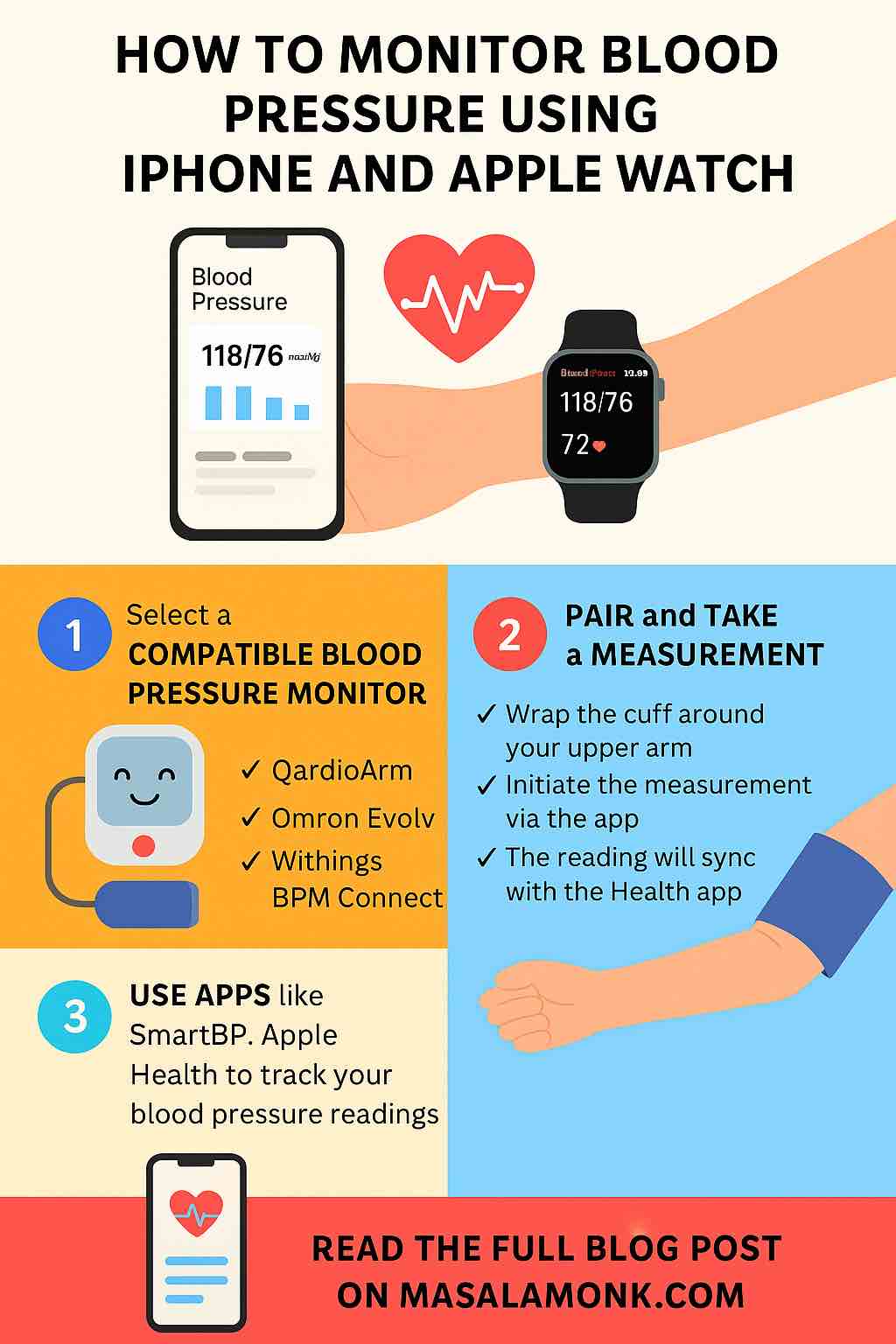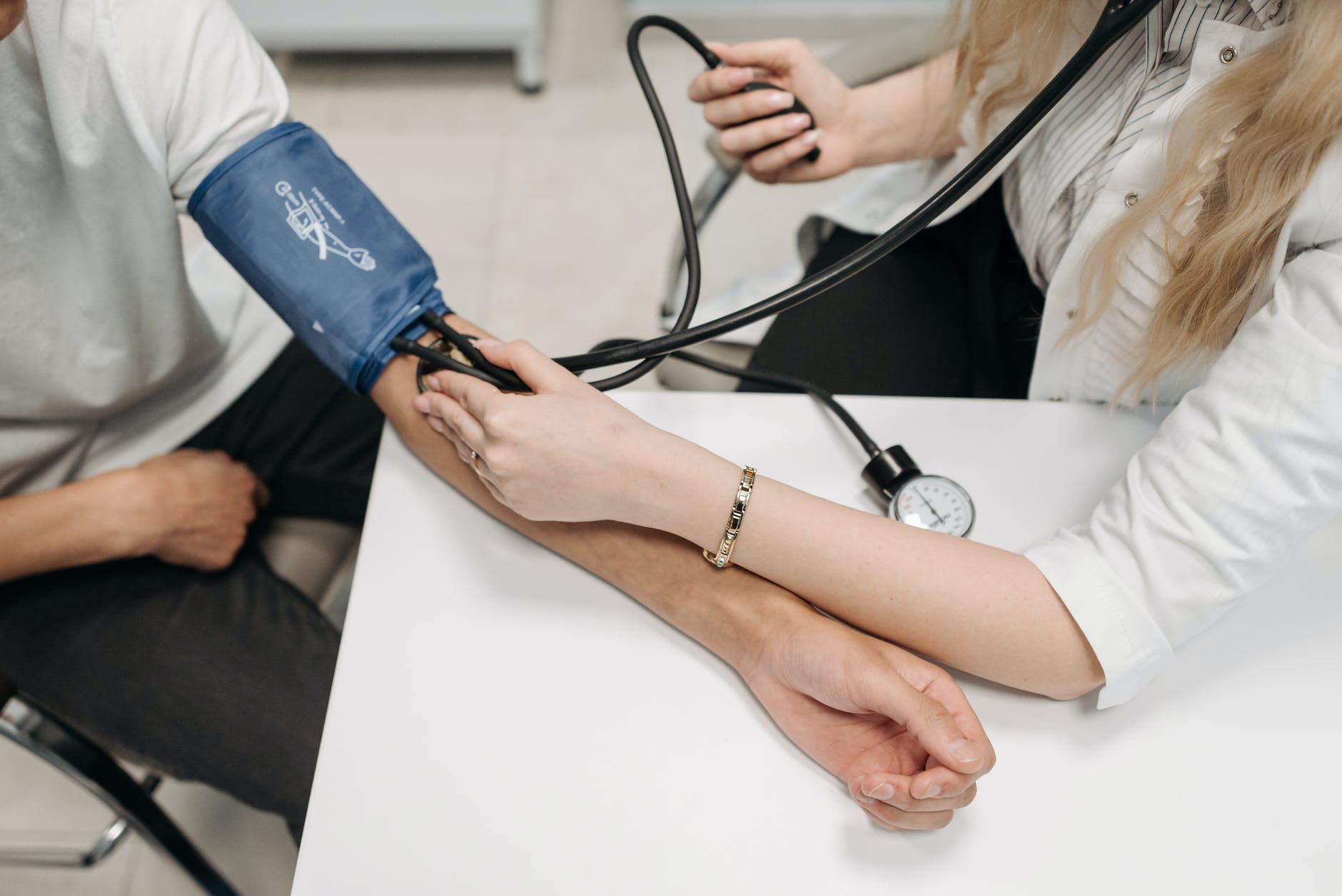
In today’s fast-paced world, keeping track of your blood pressure is more important than ever—especially if you’re managing hypertension or looking to stay proactive about your heart health. But here’s the exciting part: you can now monitor your blood pressure using your iPhone and Apple Watch—right from the comfort of your home or even on the go.
While the Apple Watch doesn’t (yet) measure blood pressure directly, it acts as a powerful companion when paired with the right tools. In this blog post, we’ll explore how to set up blood pressure monitoring, which devices and apps work best, and how to use your iPhone and Apple Watch as your personal health dashboard.
📉 Why Blood Pressure Monitoring Matters
Blood pressure is often called the “silent killer” because high blood pressure (hypertension) typically shows no symptoms until it’s too late. Regular monitoring helps:
- Detect patterns and prevent complications
- Track your progress with lifestyle changes
- Share meaningful data with healthcare providers
- Take control of your heart health with data-backed decisions
🍏 Can Your Apple Watch Measure Blood Pressure?
Short answer: Not directly.
As of now, no Apple Watch model—including Series 9 and Ultra—can measure blood pressure without an external device. Apple is reportedly working on this feature for future releases, but until then, you’ll need a Bluetooth-enabled blood pressure monitor that syncs with your iPhone (and optionally, Apple Watch).
🛠️ What You Need to Get Started
✅ A Bluetooth Blood Pressure Monitor Compatible with Apple Health
Choose a reliable, medically certified device. Top options include:
| Blood Pressure Monitor | Key Features | App |
|---|---|---|
| QardioArm | Compact, travel-friendly, irregular heartbeat detection | Qardio App |
| Withings BPM Connect | WiFi/Bluetooth sync, LED display, long battery life | Health Mate |
| Omron Evolv | Clinically validated, sleek cuff design | Omron Connect |
| iHealth Feel | Visual alerts, silent inflation, family sharing | iHealth MyVitals |
These devices pair with your iPhone and sync data to Apple Health, making it accessible on your Apple Watch.
📲 Step-by-Step: How to Monitor Blood Pressure Using iPhone and Apple Watch
1. Unbox and Charge Your Blood Pressure Monitor
Make sure it’s fully charged or has fresh batteries.
2. Download the Companion App
Install the device’s app on your iPhone (e.g., Qardio, Omron Connect, iHealth).
3. Pair the Monitor with Your iPhone
- Open Bluetooth settings and turn it on.
- Launch the app and follow pairing instructions.
4. Authorize Apple Health Access
When prompted, grant permission to sync data between the app and Apple Health.
5. Take a Blood Pressure Reading
- Sit in a quiet room and relax for 5 minutes.
- Place the cuff on your upper arm as instructed.
- Use the app or your Apple Watch (if the companion app supports it) to start the reading.
6. View and Analyze Data
- Open the Health app on your iPhone.
- Tap Browse > Vitals > Blood Pressure to see historical data, charts, and trends.
- Share this data directly with your doctor using the Health Sharing feature.
🧠 Pro Tips for Accurate Readings
- 🪑 Sit upright with your back supported
- 💪 Keep your arm at heart level
- 👕 Avoid taking readings over clothes
- ☕ Don’t consume caffeine, smoke, or exercise 30 minutes prior
- 🕒 Measure at the same time daily for consistency
📦 Recommended Apps for Blood Pressure Tracking
| App | Features |
|---|---|
| SmartBP | Manual or automatic entry, graphs, reports for doctors |
| Apple Health | Aggregates data from all health apps/devices |
| Qardio | Location tagging, irregular heartbeat detection |
| Health Mate | Insights, goals, and family health tracking |
🧘♀️ Enhance Your Heart Health with Apple Watch
While it can’t measure blood pressure directly, the Apple Watch offers features that support heart health:
- Heart Rate Monitoring
- Irregular Rhythm Notifications
- ECG Function (Series 4 and later)
- Mindfulness App for guided breathing
- Activity Tracking to encourage movement
These features, combined with accurate BP readings, give you a more holistic view of your cardiovascular health.
🔮 What’s Next: Blood Pressure on Future Apple Watch Models?
Apple is reportedly working on adding non-cuff blood pressure monitoring as early as 2025. It may initially offer trend detection (e.g., rising or falling blood pressure) rather than exact systolic/diastolic values.
Stay tuned—future Apple Watches could soon become even more powerful tools in personal healthcare.
📘 Summary: A Smarter Way to Track Blood Pressure
You don’t need a doctor’s visit to know your numbers anymore. With the right setup, your iPhone and Apple Watch combo can:
- Seamlessly record blood pressure
- Notify you of concerning patterns
- Store and share data with your medical team
- Empower you to live a heart-healthy life
🏁 Final Thoughts
Knowledge is power—and your iPhone and Apple Watch can put that power in your hands (literally). Whether you’re managing hypertension, supporting a loved one, or just being proactive, setting up a smart blood pressure monitor is one of the most impactful health upgrades you can make.
👉 Ready to take charge of your heart health? Invest in a compatible BP monitor, sync it with your devices, and start tracking today.
🙋 10 FAQs on Monitoring Blood Pressure with iPhone and Apple Watch
1. Can Apple Watch measure blood pressure on its own?
No, the Apple Watch does not currently have the hardware to measure blood pressure independently. You need to use a third-party Bluetooth-enabled blood pressure monitor that syncs with your iPhone, and optionally, your Apple Watch through companion apps.
2. Which blood pressure monitors work best with iPhone and Apple Watch?
Top-rated, Apple Health-compatible monitors include:
- QardioArm
- Withings BPM Connect
- Omron Evolv
- iHealth Feel
These devices come with their own apps, which sync seamlessly with Apple Health.
3. Do I need an Apple Watch to monitor blood pressure with my iPhone?
No, an Apple Watch is not necessary. You can monitor and track blood pressure using just your iPhone and a compatible Bluetooth blood pressure monitor. However, the Apple Watch can enhance the experience with on-wrist reminders, heart rate tracking, and app integration.
4. Which app should I use to track my blood pressure?
You can use:
- The manufacturer’s app (e.g., Qardio, Omron Connect, iHealth)
- Apple Health for centralized tracking
- Third-party apps like SmartBP for detailed graphs and reports
5. How do I sync blood pressure data with Apple Health?
Once your BP monitor’s app is installed:
- Open the app on your iPhone.
- Grant permission to read/write blood pressure data to Apple Health.
- The data will automatically sync after each reading.
6. Can I start a blood pressure reading from my Apple Watch?
Some apps (like Qardio) allow you to initiate a reading directly from your Apple Watch, provided it’s already paired with your monitor and iPhone. However, the actual reading still happens through the external cuff, not the Watch.
7. Can I share my blood pressure data with my doctor?
Yes. In the Apple Health app:
- Go to Sharing > Share with Your Doctor
- You can also export data manually via third-party apps like SmartBP or email CSV reports from the monitor’s app.
8. How often should I check my blood pressure?
For most people:
- Twice a day: Morning and evening readings provide a good baseline.
- If managing a condition, follow your doctor’s recommendation.
9. Is there any Apple Watch model with built-in blood pressure sensor?
As of 2025, no Apple Watch model has a built-in blood pressure sensor. However, rumors suggest Apple may introduce trend-based blood pressure monitoring in future releases (possibly by late 2025 or 2026).
10. Are wrist blood pressure monitors accurate?
Upper-arm monitors are typically more accurate than wrist-based ones. However, some advanced wrist models (like Omron HeartGuide, FDA-cleared) provide decent accuracy when used correctly and consistently.










